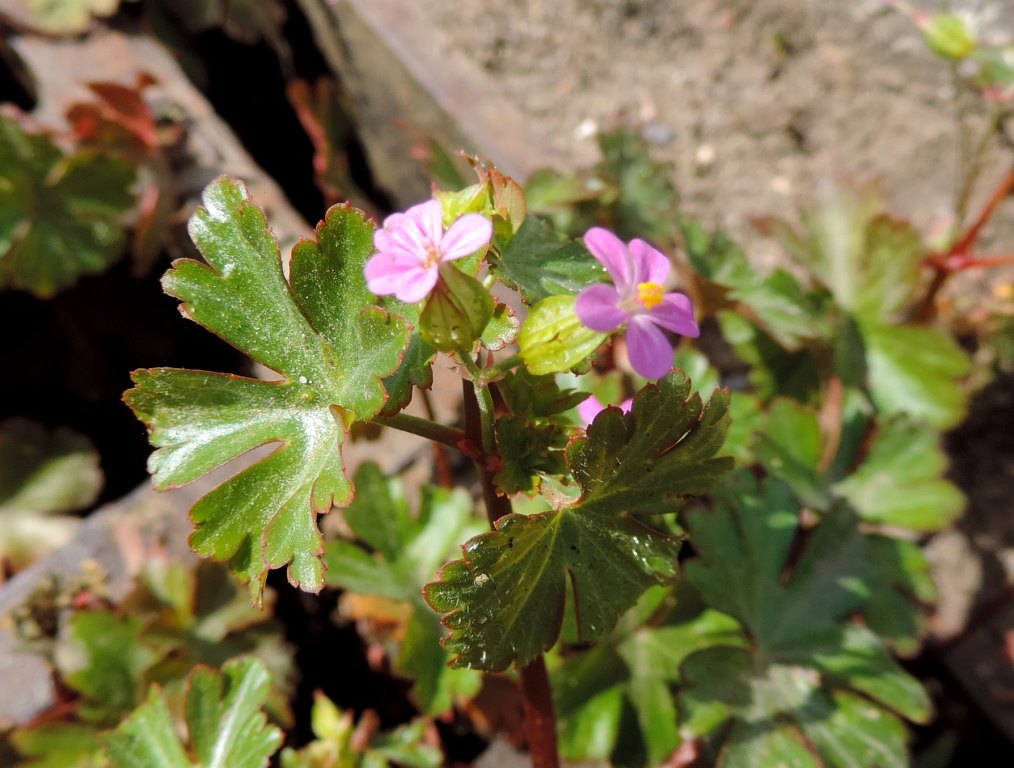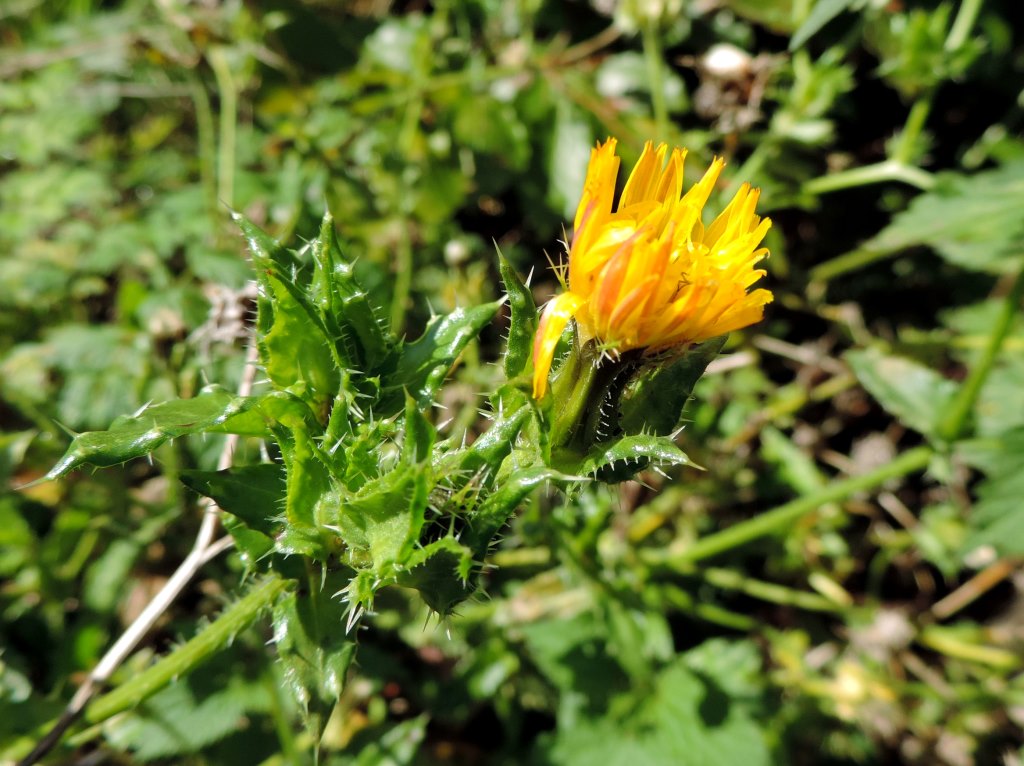John Sharpe led a walk round Earley on 17 January. It was a cold morning, with the temperature just above freezing. Members met at Sol Joel park, next door to St Peter’s Church. John gave a brief history of the area and described its geology. It is the highest point in the area and lies on London Clay. While members were assembling, a flock of Redwings were flying in and out of the red berry-bearing tree next to the car park. First stop on the walk was the graveyard of St Peter’s Church, where Red Dead-nettle, Canadian Fleabane and Ragwort were all in flower. Leaves of Oxeye Daisy, a sedum and Bluebells were noted, one of the Earth-star fungi was found and a Robin sang from one of the churchyard trees. Turning right into Church Road, the route led across the bridge over the railway line and the busy A3290 dual carriageway, then turned right immediately to get to the allotments which occupy the strip of land next to the dual carriageway. Nipplewort was found in flower and the leaves of Bucks-horn Plantain were spotted down on the path. There were piles of wood-chippings next to the main track through the allotments. A Splitgill fungus was found on a stump next to the wood-chippings. Nearby was a tree which had rotted down and John picked up a handful of dark, crumbly material which he claimed made excellent seed compost. The Wokingham Ancient Tree Forum have logged a number of veteran oaks on the allotment site. John then led the group to his own allotment, which is situated at the furthest, lowest end of the site. He has been growing crops organically here for 30 years. A network of channels have been dug to try to solve the drainage problems. A bed had recently been planted with field beans, which he and his family prefer to broad beans. These do not have any problems with aphids because there are plenty of ladybirds when necessary. The plot also has fruit trees and fruit bushes. The leaf rosette of a Spear Thistle was identified, Germander Speedwell was found in flower and a Jay flew across a neighbouring plot. Continuing round the outer edge of the allotments, 2 Goldfinches flew onto seed heads of Evening Primrose and Teasel. The track then turned to the left, following the edge of the site alongside the adjacent woodland area. A singing Song Thrush and several Great Tits were heard. Down on the path, Parsley-piert, Shining Crane’s-bill and Bristly Oxtongue were seen. After emerging from the allotments, John led the group into High Wood, a local nature reserve which is maintained by the Wokingham Countryside Service. He told people how Coastal Redwoods had been planted here in the 19th Century. Six of these have been allowed to grow unhindered. The remaining 40-odd specimens were cut back and are now very big multi-stemmed trees. A small Holm Oak was identified. There were still plenty of berries on the Holly bushes. A narrow gate led through into an area of open heathland. A team of volunteers had been cutting down invading trees and were burning them on a bonfire. Both Heather Calluna vulgaris and Cross-leaved Heath were found. There were a number of molehills. Leaves of Sheep’s Sorrel were found on an anthill. Also seen were Broom plants and flowering Gorse. The track through the reserve led to another track which crossed a footbridge over the dual carriageway and the railway line, before emerging next to Earley station. The walk continued north-westwards along Wokingham Road before turning into Mays Lane Cemetery. An old grave had a sedum and some pixie-cup lichens. The cemetery was next to the eastern side of the Sol Joel playing fields where a Mistle Thrush was guarding a big clump of Mistletoe on a tall Lime tree. In the middle of the playing fields, a row of Black-headed Gulls in winter plumage were lined up along the top bar of a goal. Back at the car park, the chacking calls of Fieldfares betrayed their presence in the surrounding trees.




Pictures by Rob Stallard
